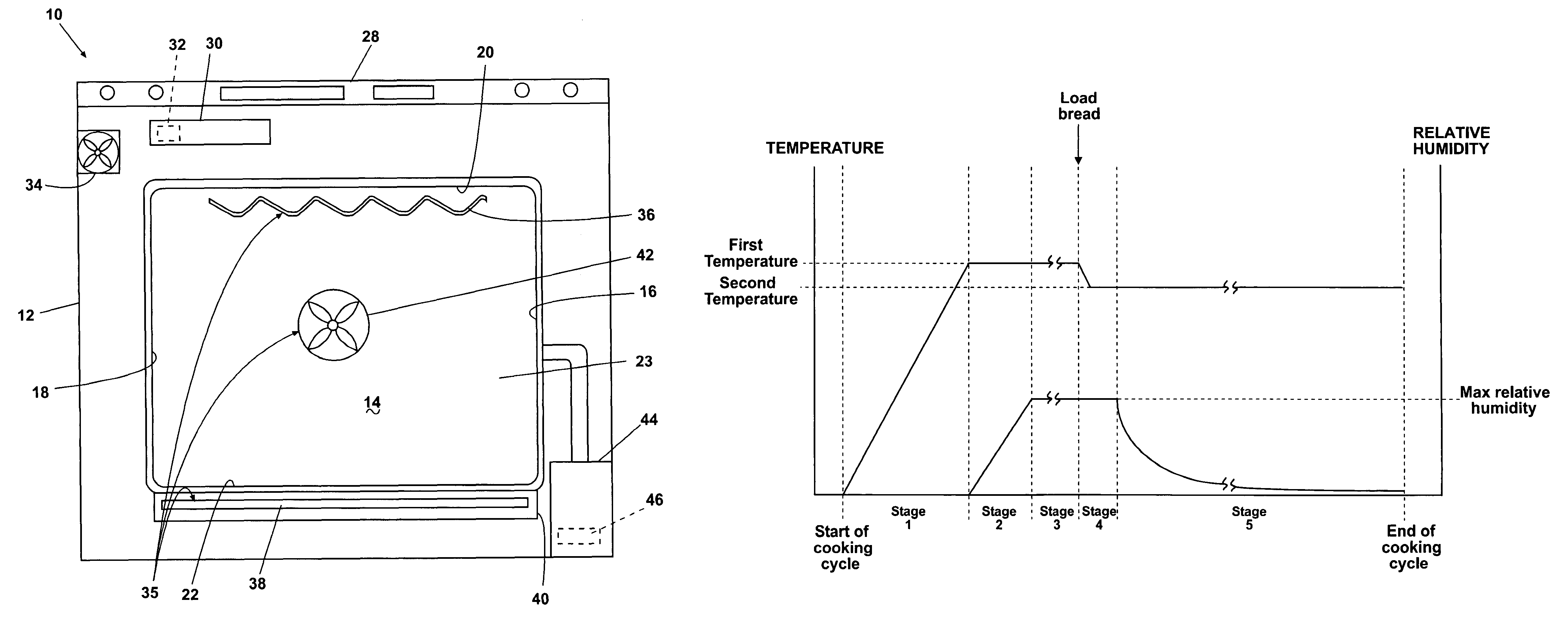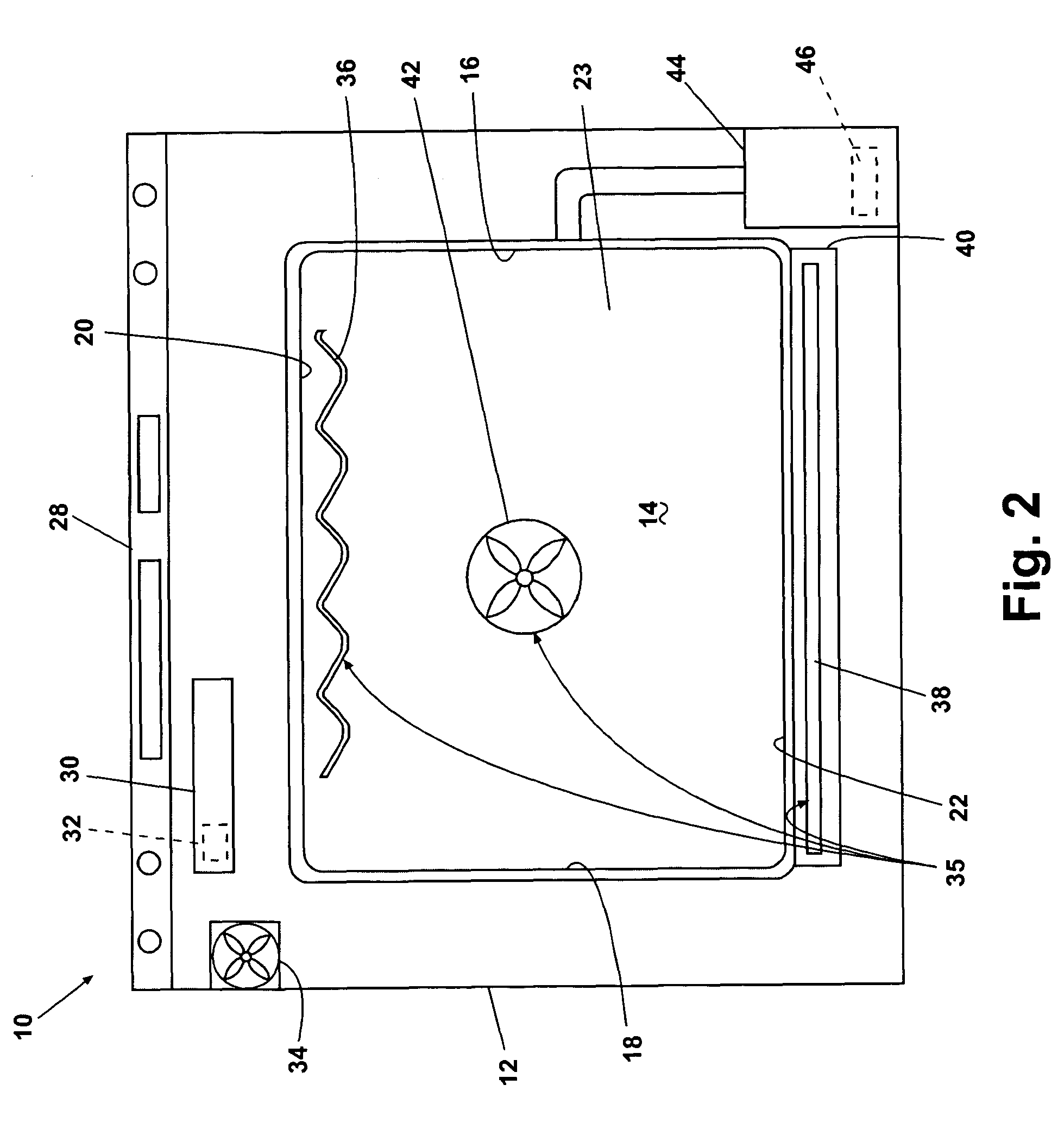Method for baking bread using steam
a technology of steaming and baking bread, which is applied in the field of baking bread, can solve the problems of undesirable crust, trapped gases undesired to crack the crisp crust, and build up pressure in the loaf, so as to reduce the duty cycle of the upper heating element, reduce the temperature of the cooking cavity, and reduce the effect of the cooking cavity
- Summary
- Abstract
- Description
- Claims
- Application Information
AI Technical Summary
Benefits of technology
Problems solved by technology
Method used
Image
Examples
Embodiment Construction
[0021]Referring now to the figures, FIG. 1 illustrates an exemplary automatic household oven 10 that can be used to implement a method for baking bread with steam according to one embodiment of the invention. The oven 10 comprises a cabinet 12 with an open-face cooking cavity 14 defined by cooking cavity walls: a pair of spaced side walls 16, 18 joined by a top wall 20, a bottom wall 22, and a rear wall 23 (FIG. 2). A door 24 selectively closes the cavity 14, and a sensor 26 detects an open position of the door 24 and a closed position of the door 24. In the open position, the door 24 is generally horizontal, as shown in FIG. 1, and can pivot about a hinge 27, as is well known in the oven art, about ninety degrees to the closed position where the door 24 is generally vertical (not shown). However, the door 24 can be oriented in any suitable position when in the open and closed positions and is not limited to the horizontal and vertical positions. When the door 24 is in the open posi...
PUM
 Login to View More
Login to View More Abstract
Description
Claims
Application Information
 Login to View More
Login to View More - R&D
- Intellectual Property
- Life Sciences
- Materials
- Tech Scout
- Unparalleled Data Quality
- Higher Quality Content
- 60% Fewer Hallucinations
Browse by: Latest US Patents, China's latest patents, Technical Efficacy Thesaurus, Application Domain, Technology Topic, Popular Technical Reports.
© 2025 PatSnap. All rights reserved.Legal|Privacy policy|Modern Slavery Act Transparency Statement|Sitemap|About US| Contact US: help@patsnap.com



